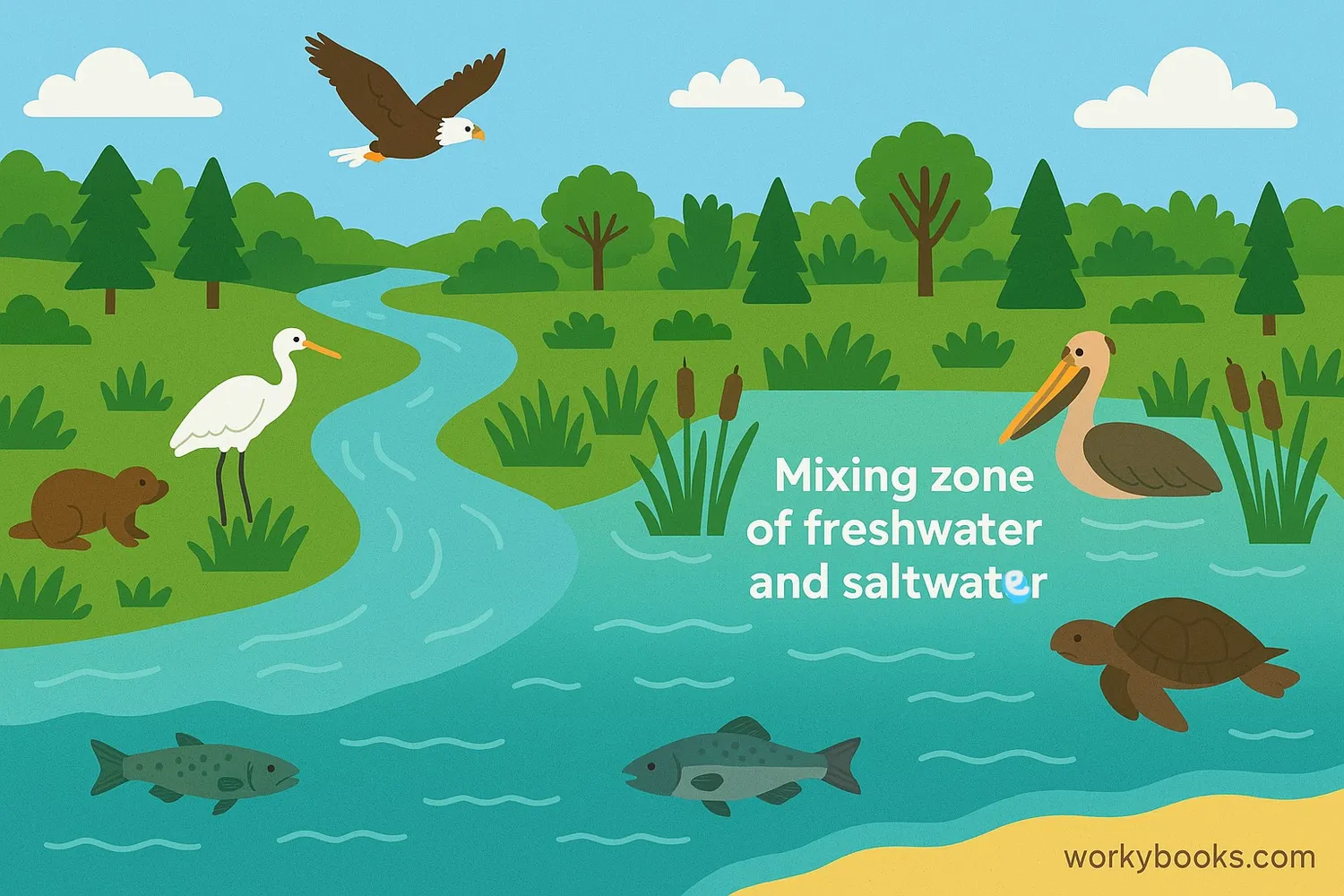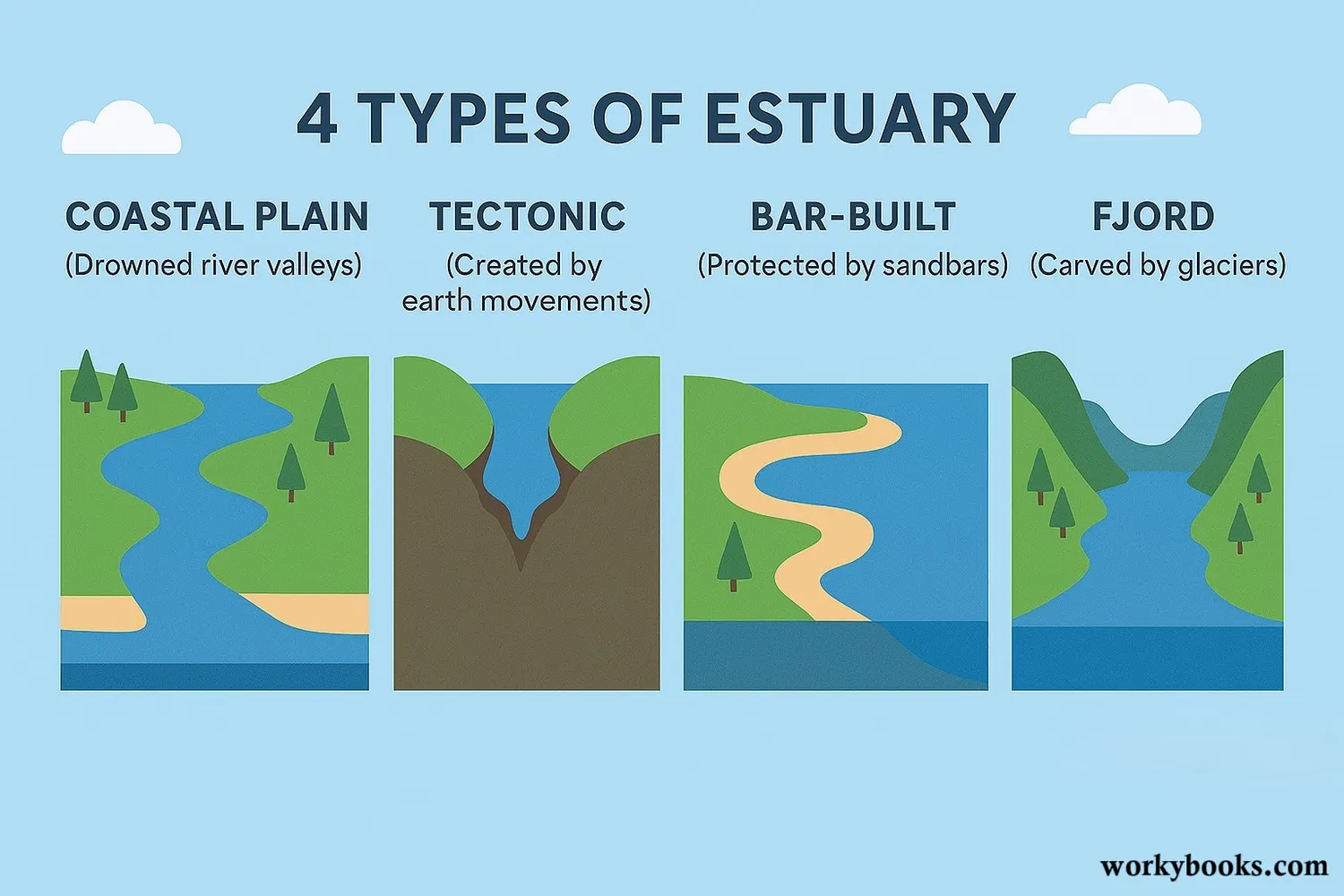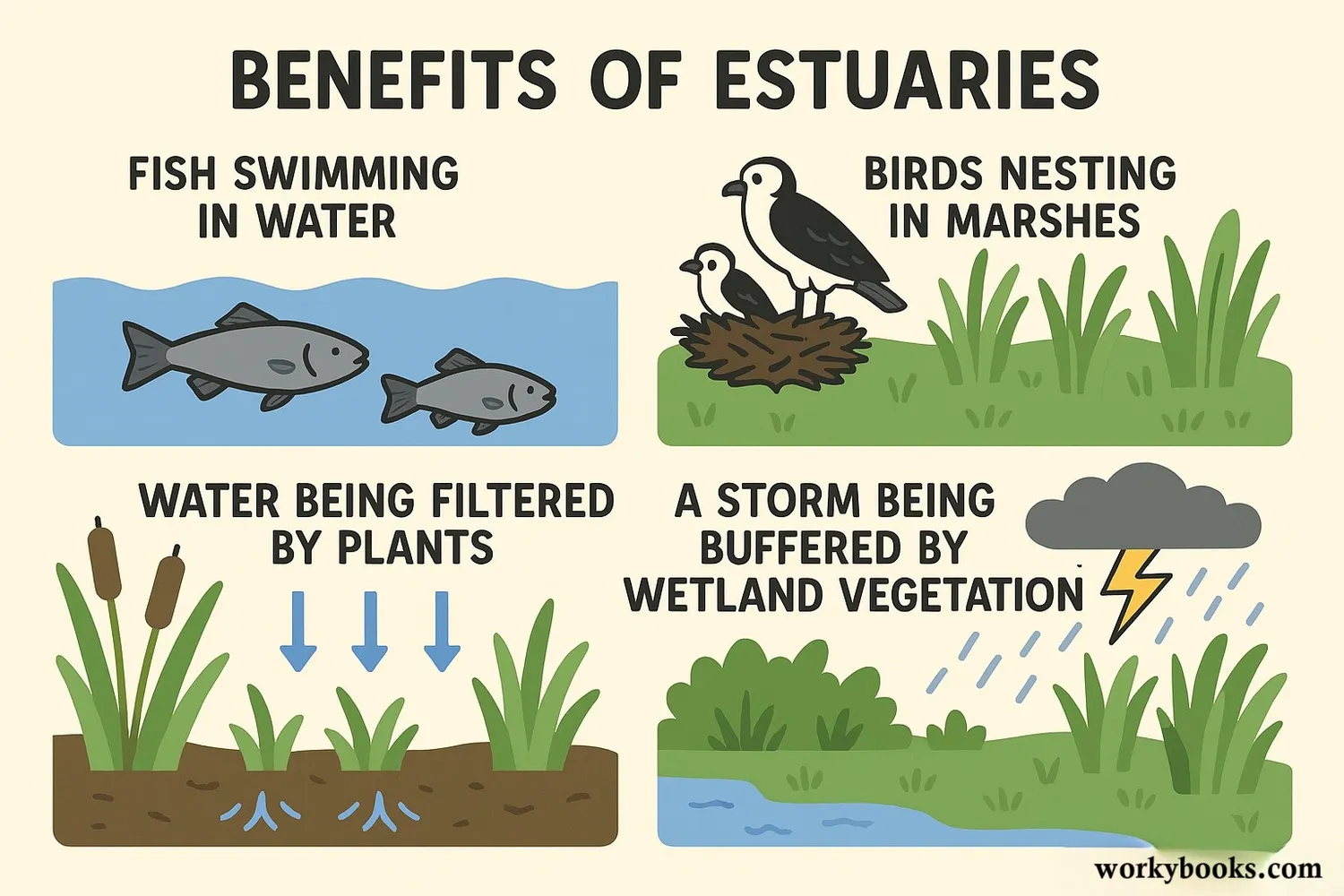Estuary - Definition, Examples, Quiz, FAQ, Trivia
Discover these unique coastal ecosystems where freshwater and saltwater mix
What is an Estuary?

An estuary is a special coastal area where freshwater from rivers and streams meets and mixes with saltwater from the ocean. This mixing creates a unique environment called brackish water that has a salinity level somewhere between freshwater and seawater.
Estuaries are often protected from the full force of the ocean by barrier islands, reefs, or peninsulas. These areas are home to many different plants and animals that have adapted to live in this changing environment where water salinity, temperature, and depth can vary with the tides and seasons.
Did You Know?
Estuaries are sometimes called "nurseries of the sea" because many ocean fish and shellfish species spend the early part of their lives in these protected waters!
How Estuaries Form

Estuaries form in different ways depending on their location and geology. The four main types of estuaries are:
Coastal Plain
Formed when sea levels rise and fill existing river valleys
Tectonic
Created by movements of Earth's crust that sink land below sea level
Bar-built
Formed when sandbars or barrier islands build up along coastlines
Fjords
Carved by glaciers and then filled with seawater as glaciers retreat
The water in estuaries is always changing. During high tide, more saltwater comes in from the ocean. During low tide, more freshwater flows out from the rivers. This constant movement of tidal waters helps distribute nutrients and oxygen throughout the ecosystem.
Changing Landscapes
Estuaries are among the most dynamic ecosystems on Earth, constantly changing shape due to erosion, sediment deposition, and tidal action.
Why Estuaries Matter

Estuaries are incredibly valuable ecosystems that provide many benefits:
Wildlife Habitat
Provide homes for thousands of species of fish, birds, and other animals
Water Filtration
Plants and sediments filter pollutants from water before it reaches the ocean
Storm Protection
Wetlands absorb floodwaters and buffer coastal areas from storms
Estuaries also support human activities and economies by:
• Providing nurseries for commercially important fish and shellfish
• Offering recreational opportunities like fishing, boating, and birdwatching
• Supporting tourism in coastal communities
• Serving as transportation routes for shipping
Despite their importance, estuaries face threats from pollution, development, climate change, and invasive species. Protecting these valuable ecosystems is essential for both environmental health and human wellbeing.
Estuary Quiz
Test your estuary knowledge with this quiz! Answer all 5 questions to see how much you've learned.
Frequently Asked Questions
Here are answers to some common questions about estuaries:
Estuary Trivia
Discover some amazing facts about estuaries!
Economic Value
Estuaries contribute billions of dollars to the economy through fishing, tourism, and recreation. Commercial fishing in estuaries generates over $15 billion annually in the United States alone.
Biodiversity Hotspots
Though estuaries make up less than 3% of the world's coastal areas, they support over 75% of commercial fish species and provide essential habitat for countless bird and mammal species.
Natural Water Filters
Estuary plants and sediments can filter pollutants from water. A single acre of estuary wetland can filter the equivalent of what 75 people pollute in one year!
Threatened Ecosystems
Estuaries are among the most threatened ecosystems on Earth. In the United States, more than half of the original estuary habitats have been destroyed or severely damaged by human activities.


